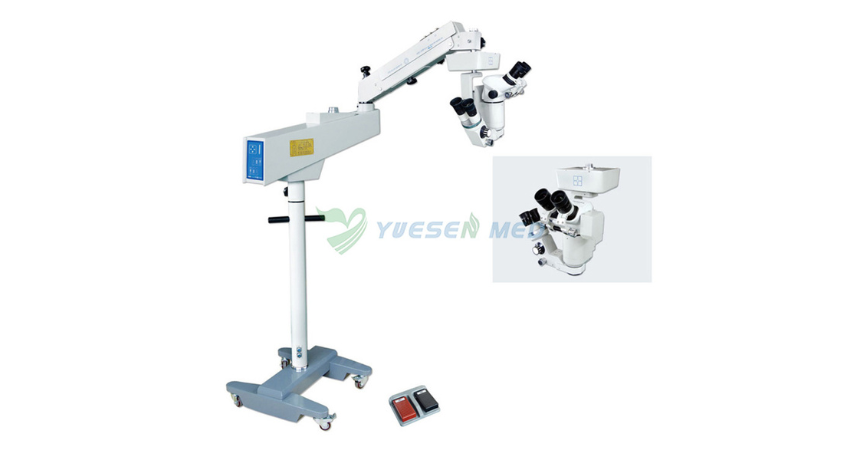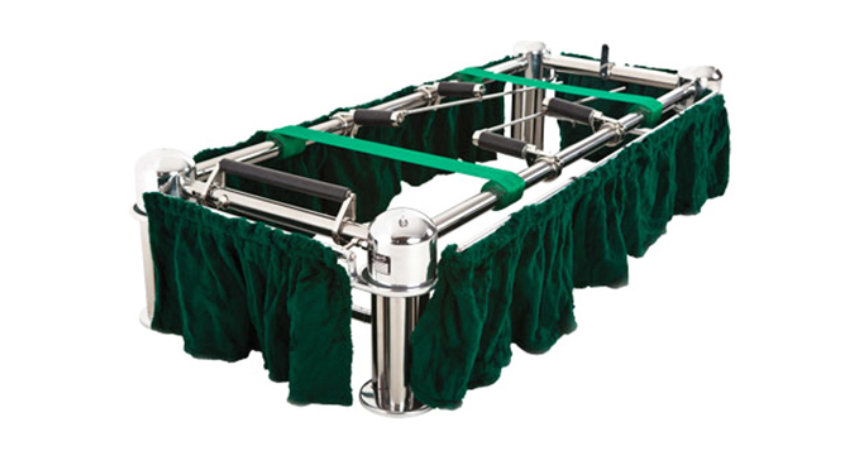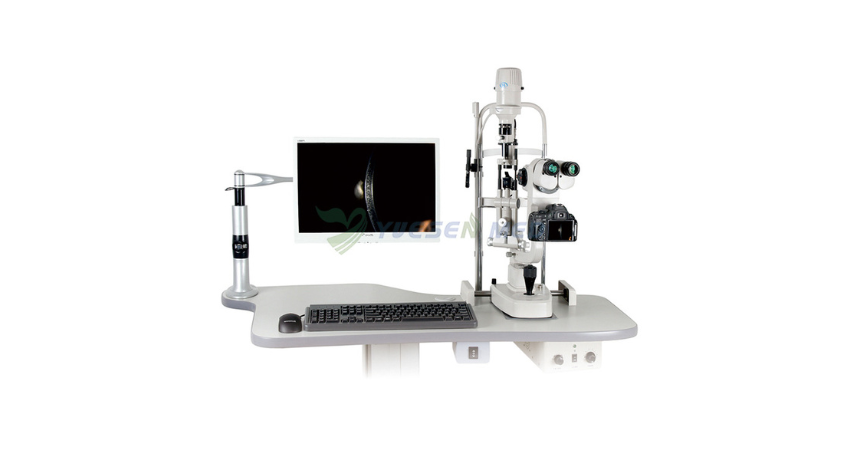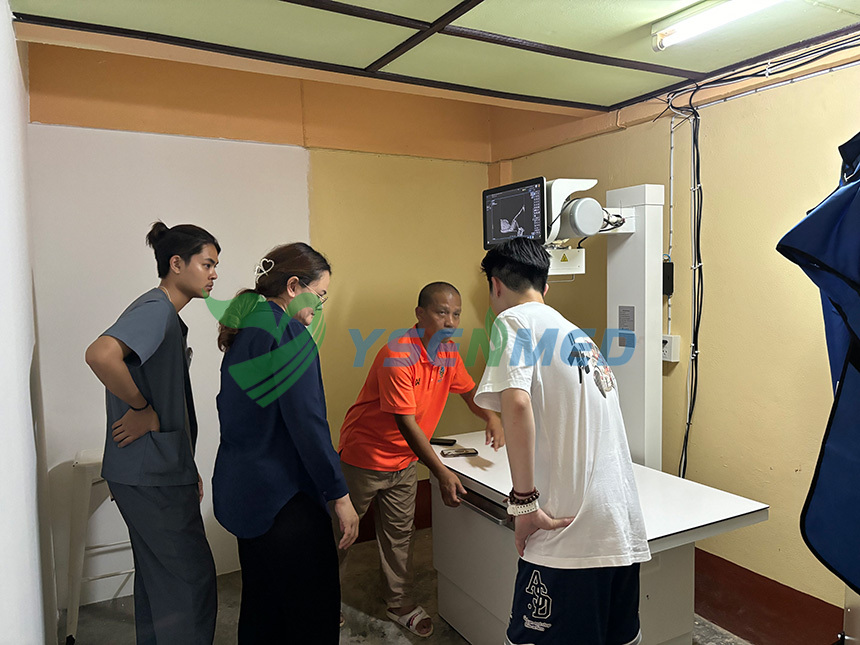Hot Products
X Ray Machine To Zimbabwe
x ray machine, 50KW x ray machine
Microscope To Malawi
Achromatic objectives: 4X、10X、40X(S), 100X(S、Oil) Wide field eyepiece: WF10X(WF16X for option) Eyepiece head: Sliding binocular head inclined at 45° Stage: Double layer mechanical stage size 140X140mm, moving range 75X45mm Focusing: Coaxial coarse and
Color Doppler Trolley System To Somalia
Color Doppler Trolley System To Somalia
Automated Hematology Analyzer To Peru
High quality Automated Hematology Analyzer (3-part differential) with cheap price
Warmth and Protection: How Medical Infant Incubators Save Lives
Views : 177
Update time : 2024-04-20 17:16:00
Bringing a newborn into the world is a joyous occasion filled with hope and excitement. However, for some babies, especially those born prematurely or with certain medical conditions, the transition from womb to outside world can be fraught with challenges. This is where medical infant incubators come into play, providing a vital lifeline for these vulnerable infants. In this article, we'll delve into the world of medical infant incubators, exploring how they work, why they are essential, and the incredible impact they have on saving lives.

Understanding the Importance of Medical Infant Incubators
A Safe Haven for Fragile Newborns
Imagine being thrust into a world that's too cold, too bright, and too loud for your delicate senses to handle. For premature babies, this is their reality. Medical infant incubators offer a safe and controlled environment where these tiny miracles can thrive despite their early arrival.
Mimicking the Womb's Conditions
The womb provides a warm and protective environment for a developing fetus, maintaining a constant temperature and shielding the baby from external stimuli. Medical infant incubators replicate these conditions, offering a regulated temperature, humidity, and oxygen levels to support the infant's growth and development.
How Medical Infant Incubators Work
Temperature Control
Maintaining an optimal body temperature is crucial for premature infants, as they lack the necessary body fat to regulate their own temperature effectively. Medical incubators use sensors and heaters to closely monitor and adjust the temperature inside the unit, ensuring that the baby remains warm and comfortable.
Monitoring Vital Signs
Modern incubators are equipped with advanced monitoring systems that continuously track the baby's vital signs, including heart rate, respiratory rate, and oxygen saturation levels. This real-time data allows healthcare providers to detect any abnormalities early and intervene promptly.
Protection from Infection
Premature babies have underdeveloped immune systems, making them more susceptible to infections. Medical infant incubators provide a sterile environment, minimizing the risk of exposure to harmful pathogens and reducing the likelihood of nosocomial infections.
The Evolution of Medical Infant Incubators
From Humble Beginnings to Cutting-Edge Technology
The concept of infant incubators dates back to the late 19th century, with early versions consisting of simple wooden boxes heated by hot water bottles. Over the years, advancements in technology have transformed these rudimentary devices into sophisticated medical equipment equipped with state-of-the-art features.
Innovations in Design and Functionality
Modern medical infant incubators boast a range of features designed to optimize the care of premature and critically ill infants. From adjustable humidity levels to integrated phototherapy lights for treating jaundice, these devices offer a comprehensive solution for neonatal care.
The Impact of Medical Infant Incubators on Neonatal Outcomes
Reducing Mortality Rates
The widespread use of medical infant incubators has contributed to a significant decline in neonatal mortality rates worldwide. By providing a supportive environment for premature infants, these devices have helped countless babies overcome the challenges associated with early birth and go on to lead healthy lives.
Preventing Long-Term Complications
Premature birth is associated with a myriad of potential complications, including respiratory distress syndrome, intraventricular hemorrhage, and developmental delays. Medical infant incubators play a crucial role in mitigating these risks by providing specialized care tailored to the unique needs of each infant.
Conclusion
In conclusion, medical infant incubators are indispensable tools in the field of neonatal care, offering warmth, protection, and support to the most vulnerable members of our society. Through their innovative design and advanced functionality, these devices have revolutionized the way we care for premature and critically ill infants, saving countless lives in the process. As we continue to push the boundaries of medical technology, it's reassuring to know that these little miracles will always have a safe haven to call home as they embark on their journey towards health and healing.
FAQs
How do medical infant incubators regulate temperature?
Medical infant incubators use sensors and heaters to closely monitor and adjust the temperature inside the unit. These devices are equipped with temperature probes that measure the infant's skin temperature, allowing healthcare providers to ensure that the baby remains warm and comfortable. The heaters inside the incubator generate heat as needed to maintain the desired temperature, while built-in ventilation systems help regulate airflow and prevent overheating.
Do medical infant incubators provide protection from noise and light?
Yes, medical infant incubators are designed to shield premature babies from excessive noise and light, creating a calm and soothing environment for optimal growth and development. The walls of the incubator are typically made of transparent material that allows healthcare providers to monitor the baby's condition while still providing a barrier against external stimuli. Some incubators also feature built-in soundproofing and dimmable lighting to further minimize sensory disturbances.
Are medical infant incubators used only for premature babies?
While medical infant incubators are commonly used to care for premature babies, they can also be used for full-term infants who require specialized medical attention due to certain medical conditions or complications at birth. These may include infants with respiratory distress syndrome, meconium aspiration syndrome, or hypoxic-ischemic encephalopathy, among others. Medical professionals assess each baby's individual needs and determine the most appropriate course of treatment, which may involve placement in an incubator for a period of time.
How do medical infant incubators prevent dehydration?
Medical infant incubators help prevent dehydration by maintaining optimal humidity levels inside the unit. Premature babies are at increased risk of dehydration due to their immature skin and limited ability to regulate fluid balance. By controlling the humidity within the incubator, healthcare providers can help prevent excessive moisture loss through the baby's skin and respiratory tract. Some incubators feature integrated humidification systems that adjust humidity levels automatically based on the infant's needs, ensuring a comfortable and stable environment.
Do medical infant incubators have any potential risks or side effects?
While medical infant incubators are generally safe and effective for providing specialized care to premature and critically ill infants, there are some potential risks and side effects to consider. These may include skin irritation or breakdown from prolonged exposure to heat and moisture, as well as an increased risk of infection if proper cleaning and disinfection protocols are not followed. Healthcare providers closely monitor babies in incubators for signs of discomfort or adverse reactions and take appropriate measures to mitigate any risks or side effects.

Understanding the Importance of Medical Infant Incubators
A Safe Haven for Fragile Newborns
Imagine being thrust into a world that's too cold, too bright, and too loud for your delicate senses to handle. For premature babies, this is their reality. Medical infant incubators offer a safe and controlled environment where these tiny miracles can thrive despite their early arrival.
Mimicking the Womb's Conditions
The womb provides a warm and protective environment for a developing fetus, maintaining a constant temperature and shielding the baby from external stimuli. Medical infant incubators replicate these conditions, offering a regulated temperature, humidity, and oxygen levels to support the infant's growth and development.
How Medical Infant Incubators Work
Temperature Control
Maintaining an optimal body temperature is crucial for premature infants, as they lack the necessary body fat to regulate their own temperature effectively. Medical incubators use sensors and heaters to closely monitor and adjust the temperature inside the unit, ensuring that the baby remains warm and comfortable.
Monitoring Vital Signs
Modern incubators are equipped with advanced monitoring systems that continuously track the baby's vital signs, including heart rate, respiratory rate, and oxygen saturation levels. This real-time data allows healthcare providers to detect any abnormalities early and intervene promptly.
Protection from Infection
Premature babies have underdeveloped immune systems, making them more susceptible to infections. Medical infant incubators provide a sterile environment, minimizing the risk of exposure to harmful pathogens and reducing the likelihood of nosocomial infections.
The Evolution of Medical Infant Incubators
From Humble Beginnings to Cutting-Edge Technology
The concept of infant incubators dates back to the late 19th century, with early versions consisting of simple wooden boxes heated by hot water bottles. Over the years, advancements in technology have transformed these rudimentary devices into sophisticated medical equipment equipped with state-of-the-art features.
Innovations in Design and Functionality
Modern medical infant incubators boast a range of features designed to optimize the care of premature and critically ill infants. From adjustable humidity levels to integrated phototherapy lights for treating jaundice, these devices offer a comprehensive solution for neonatal care.
The Impact of Medical Infant Incubators on Neonatal Outcomes
Reducing Mortality Rates
The widespread use of medical infant incubators has contributed to a significant decline in neonatal mortality rates worldwide. By providing a supportive environment for premature infants, these devices have helped countless babies overcome the challenges associated with early birth and go on to lead healthy lives.
Preventing Long-Term Complications
Premature birth is associated with a myriad of potential complications, including respiratory distress syndrome, intraventricular hemorrhage, and developmental delays. Medical infant incubators play a crucial role in mitigating these risks by providing specialized care tailored to the unique needs of each infant.
Conclusion
In conclusion, medical infant incubators are indispensable tools in the field of neonatal care, offering warmth, protection, and support to the most vulnerable members of our society. Through their innovative design and advanced functionality, these devices have revolutionized the way we care for premature and critically ill infants, saving countless lives in the process. As we continue to push the boundaries of medical technology, it's reassuring to know that these little miracles will always have a safe haven to call home as they embark on their journey towards health and healing.
FAQs
How do medical infant incubators regulate temperature?
Medical infant incubators use sensors and heaters to closely monitor and adjust the temperature inside the unit. These devices are equipped with temperature probes that measure the infant's skin temperature, allowing healthcare providers to ensure that the baby remains warm and comfortable. The heaters inside the incubator generate heat as needed to maintain the desired temperature, while built-in ventilation systems help regulate airflow and prevent overheating.
Do medical infant incubators provide protection from noise and light?
Yes, medical infant incubators are designed to shield premature babies from excessive noise and light, creating a calm and soothing environment for optimal growth and development. The walls of the incubator are typically made of transparent material that allows healthcare providers to monitor the baby's condition while still providing a barrier against external stimuli. Some incubators also feature built-in soundproofing and dimmable lighting to further minimize sensory disturbances.
Are medical infant incubators used only for premature babies?
While medical infant incubators are commonly used to care for premature babies, they can also be used for full-term infants who require specialized medical attention due to certain medical conditions or complications at birth. These may include infants with respiratory distress syndrome, meconium aspiration syndrome, or hypoxic-ischemic encephalopathy, among others. Medical professionals assess each baby's individual needs and determine the most appropriate course of treatment, which may involve placement in an incubator for a period of time.
How do medical infant incubators prevent dehydration?
Medical infant incubators help prevent dehydration by maintaining optimal humidity levels inside the unit. Premature babies are at increased risk of dehydration due to their immature skin and limited ability to regulate fluid balance. By controlling the humidity within the incubator, healthcare providers can help prevent excessive moisture loss through the baby's skin and respiratory tract. Some incubators feature integrated humidification systems that adjust humidity levels automatically based on the infant's needs, ensuring a comfortable and stable environment.
Do medical infant incubators have any potential risks or side effects?
While medical infant incubators are generally safe and effective for providing specialized care to premature and critically ill infants, there are some potential risks and side effects to consider. These may include skin irritation or breakdown from prolonged exposure to heat and moisture, as well as an increased risk of infection if proper cleaning and disinfection protocols are not followed. Healthcare providers closely monitor babies in incubators for signs of discomfort or adverse reactions and take appropriate measures to mitigate any risks or side effects.
Related News
Read More >>
 The Visionary Tool: Exploring the Eye Surgical Operating Microscope
The Visionary Tool: Exploring the Eye Surgical Operating Microscope
Apr .30.2024
In this article, we delve into the intricacies of the eye surgical operating microscope, its components, functionalities, and the invaluable role it plays in ensuring successful eye surgeries.
 Installation video for YSENMED YSCLD400 coffin lowering device.
Installation video for YSENMED YSCLD400 coffin lowering device.
Apr .29.2024
Installation video for YSENMED YSCLD400 coffin lowering device.
 Through the Lens: Digital Ophthalmic Slit Lamps and Modern Eye Care
Through the Lens: Digital Ophthalmic Slit Lamps and Modern Eye Care
Apr .29.2024
Digital ophthalmic slit lamps offer a window into the intricate structures of the eye, allowing eye care professionals to diagnose and treat a myriad of ocular conditions with unparalleled precision.
 YSENMED radiology engineer receives good reviews from Thai vet
YSENMED radiology engineer receives good reviews from Thai vet
Apr .28.2024
YSENMED engineer helps with installation of 32kw digital veterinary x-ray system in a Thai vet clnic, and receives good reviews from the customers.




